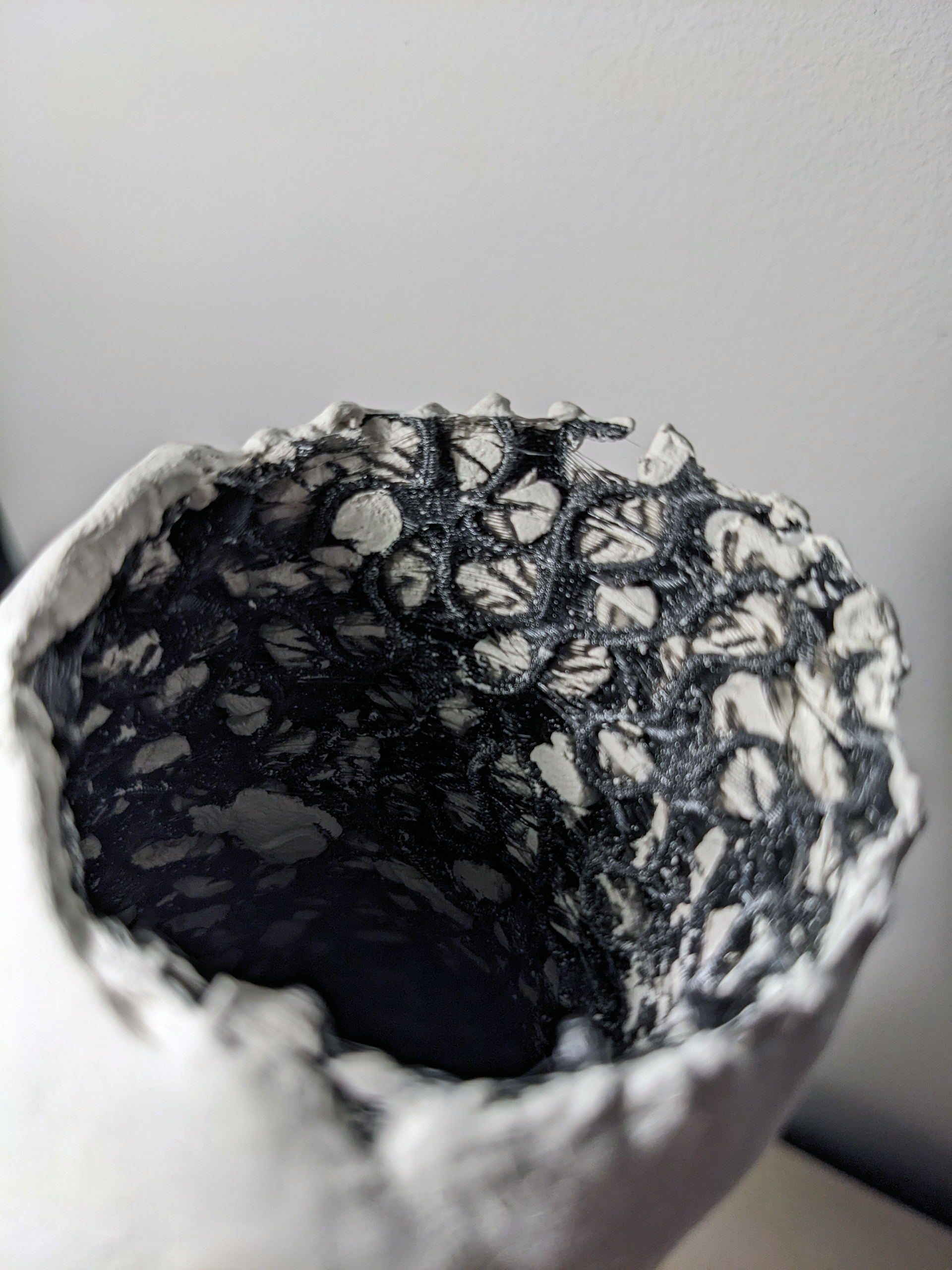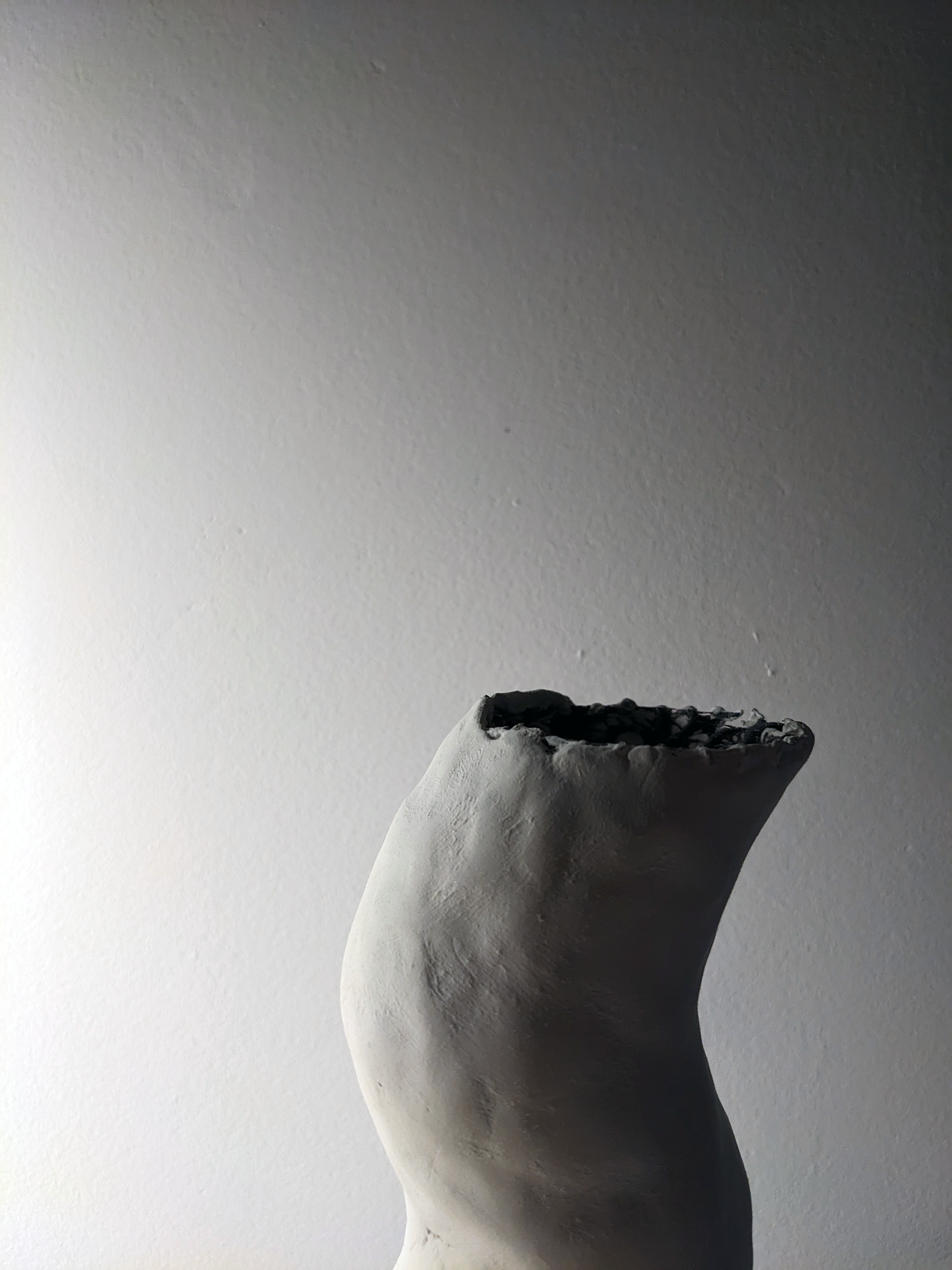What
"Printed-Shaped-Crafted" explores "craftification" to enhance the perceived value of low-cost 3D-printed objects by merging traditional craftsmanship with the efficiency of additive manufacturing technologies. This approach mixes biodegradable PLA and natural air-dry clay to forge a distinctive neo-craft style that harmoniously balances machine precision with artisanal handwork. The process starts with a rapid, robotized 3D printing of the basic structure, followed by a meticulous, time-intensive application of air-dry clay, which is then hand-sanded to achieve a refined finish. This technique plays with the element of time, creating an intriguing oxymoron: a quick technological first step contrasted with a slow, laborious artisanal second step or a precise inital shape creation with a finishing technique which integrates imperfection, thus emphazising the significance and value of handwork.
Why
In a world that increasingly values speed and efficiency, yet traditional crafts maintain a high perceived value due to the mastery of handwork techniques and significant time investment required for their creation. This value is not only monetary but also emotional, reflecting the hours of human effort imbued in every crafted piece. The imperfections in handcrafted objects are celebrated as markers of authenticity and the human touch, making each piece unique. In contrast, objects produced through rapid methods like 3D printing are often viewed as ephemeral and utilitarian, primarily used for prototyping rather than as objects of value. By merging the rapid prototyping capabilities of 3D printing with artisanal finishing techniques, this project aims to elevate the status of printed objects to that of crafted treasures, blurring the lines between industry 4.0 and craft.
How
The process begins with 3D printing of the desired geometry using PLA as the printing material. After printing, each object undergoes a hand-finishing process. A layer of natural air-dry clay is applied manually to the surface of the printed forms. This step is the most time-consuming part of the production, as the clay requires multiple 'retouches' to address the slow drying time and the emergence of cracks. These imperfections necessitate careful attention and repeated application to ensure quality and durability. Following the clay application, the objects are sanded by hand to achieve a smooth and refined finish. This combination of digital precision and manual artistry is crucial in transforming the initial 3D-printed objects into pieces that resonate with the crafted aesthetic and tactile quality of traditional handicrafts. Through this labor-intensive process, the project redefines the value of 3D-printed objects, elevating them from functional prototypes to objects of artistic and cultural significance.

